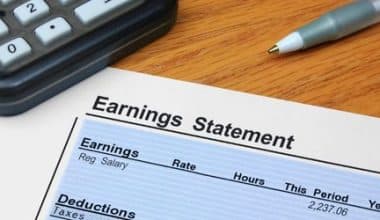Do you know that after the sale of your previous home closes, you can lower your new mortgage payments with the use of a mortgage recast? Making a lump-sum payment and asking your lender to recast your loan are both options you have once you receive the money from the sale of your house. In the latter part of this article, we will go into more details on this mortgage recasting, so read on!
Recasting Mortgage
A mortgage recast allows you to pay off the principal of your loan in one lump sum. Then, using the new (lower) balance, your lender will remortgage your loan. Since your principal has gone down, you can pay less each month while keeping the same interest rate and length.
When a homeowner buys a new house but doesn’t sell their previous one, they most frequently refinance their mortgage. After selling the property, the homeowner can use the money from the sale to pay for a refinancing of their new mortgage.
If you acquire a substantial sum of money and want to cut your mortgage payments, you might also consider a recast. A homeowner might get an inheritance or a sizable bonus at work, for instance.
Recastable Mortgage Types
Not every mortgage is recastable. VA, USDA, or FHA loans cannot be recast due to current limitations and regulations. Also, most jumbo loans do not meet the criteria for the mortgage recasting process.
However, there are only two specific mortgages that can be recast:
Low-Amortization Loans:
A negative amortization loan may be recast, and the recast’s conditions may be spelled out in the loan’s terms as well. More particularly, borrowers are able to plan payments that are less than the interest rate on a standard negative amortization loan because of the structuring of the payments.
Option Adjustable-rate Mortgage:
The major difference between option adjustable-rate mortgages (option ARM) and negative amortization loans is that option ARM borrowers have the choice of paying off the entire loan principal and interest or just a portion of it. As a result, option ARMs are more adaptable than loans with negative amortization. However, because of changes in interest rates, there is a potential that the borrower will ultimately have greater debt.
Process Of Mortgage Recasting?
Here are the stages you can anticipate; however, the specifics may differ depending on the lender:
The property owner pays a fee.
You’ll have to provide a lender with a sizable lump-sum payment, usually at least $10,000, though make sure you read the fine print. This money lowers your debt by contributing to the principle of your loan.
The lender refinances your debt.
They repay principal and interest according to a set timetable called amortization. Over a predetermined period, you repay the loan. The amortization schedule that the lender offers may show you how your payments will alter over the course of the loan.
They charge lender fees for service.
Loan recasting typically entails a maintenance fee from the lender. Typically, they don’t cost more than a few hundred dollars, however to get more information, speak with your lender.
The Benefits Of Refinancing A Mortgage
An additional benefit of a mortgage recast over alternative lending options is cheaper monthly payments. Among them are:
Not requiring a credit check:
When you refinance a loan, the lender reviews your credit record and modifies the terms according to your existing creditworthiness. A recast often involves no credit check.
They paid less money in interest:
The total amount of interest paid over the course of your loan falls as your principal is reduced. This lowers your overall loan payment as a result.
Keep the interest rate you have now.
It makes no difference what the current mortgage rates are when you refinance your mortgage. Even if the rates go higher, you’ll keep your cheaper rate.
No closing expenses:
You will be responsible for closing fees when you refinance your loan. Recasting your loan may incur a fee from your lender, but it is typically less than standard closing expenses.
The loan’s remaining term is not extended:
You might have to extend the length of your loan when you refinance it. The length of your loan remains the same after a recast.
No protracted application procedure:
Many of the steps involved in your initial mortgage application are repeated when you refinance a home. A mortgage recast involves substantially less work, which speeds up the process.
How a Mortgage Recast Operates
Reduced monthly payments are the major advantage of recasting a mortgage for the borrower. A mortgage lender will often shorten the length of the loan if the borrower pays more principal while keeping the fixed monthly payment the same. This is done by simply increasing the principal and decreasing the interest portion of the payment.
If a large principal payment is made, recasting can reduce the total amount of interest the borrower will pay over the life of the loan by lowering the principal balance and the interest that will be due on the loan’s new monthly payments.
Recasting Mortgage Calculator
Although your lender should be able to give you information, it’s not a terrible idea to perform your own mortgage recast calculation. Let’s look at how to compute it manually before moving on to the simplest solution, which is to use a mortgage recast calculator.
To reduce your overall loan balance, you must first determine when you plan to make the lump-sum payment. Then, using the new amount and the same interest rate, you need to figure out how much you will have to pay each month for the rest of the loan’s term.
Three numbers will be necessary to compute the terms of a mortgage recast:
- The balance of your loan
- The number of months left on the loan, and
- The interest rate.
You can better understand how your current mortgage payment might change by considering these aspects. You can learn more about how your payments can change by using one of the many helpful online recast calculators. To better understand their new payments, homeowners might enter each variable into this mortgage recast calculator, for instance.
If your mortgage total is $200,000 and your interest rate is 4.99%, for instance, you have a 30-year fixed-rate mortgage. You would have to pay $1,072.43 each month in this scenario.
Your balance falls to $160,000 when you choose to pay a lump sum of $40,000 in this way. It will reduce your payment by $201.62 each month if you recast, bringing it to approximately $870.81.
Recasting Mortgage Wells Fargo
With assets of almost $1.9 trillion, Wells Fargo is a top provider of financial services. It is the top middle-market banking service in the US, serving more than 10% of small businesses in addition to one in three homes.
To refinance a mortgage with Wells Fargo, you must have paid at least $20,000 more in principle.
Recasting Mortgage Chase
Your needed monthly payment amount has not changed, regardless of whether you increased your mortgage payment each month a little or made a substantial lump sum payment all at once.
You can choose to pay less each month instead of paying off the loan early because you paid more toward the principal. Recasting is the name for this option. A recast lowers your monthly payment by spreading out the amount you still owe over the rest of your loan’s life.
Is It a Good Idea To Recast My Mortgage?
You can increase the value of your home and keep more of your monthly income by recasting your mortgage. If you have money saved up, get a cash gift or inheritance, or if you have access to any of these sources of income, would prefer smaller monthly costs. You’ll lower your loan principal and monthly payment by refinancing your mortgage.
What Are The Disadvantages Of Recasting a Mortgage?
The interest rate stays the same:
This is advantageous if interest rates on mortgages have increased since you last financed your loan. Recasting won’t enable you to benefit from a more advantageous rate, though, if rates are falling. Refinancing may offer a better solution in this situation.
There is no equity that may be borrowed:
You need to refinance if you wish to withdraw equity from your house.
Possible limitations exist:
Not all lenders provide mortgage recasting services, and not all loans qualify for one (the FHA/VA and USDA loans, for example, do not). The amount you owe, the amount you have paid, and your payment history may also be subject to restrictions.
Is It Better To Pay Down Principal Or Recast?
Only if you believe the reduced monthly payments outweigh the lump sum, you paid up front is a recast mortgage, a suitable decision. Some homeowners could decide that the savings from refinancing a mortgage are insufficient to make it worthwhile, and they would rather put their money to better use.
The principal reduction lowers the interest paid on the loan by a lot over the life of the loan, which is something that a “regular” principal reduction doesn’t do. Don’t refinance a mortgage and reduce the principal if paying less interest and shortening the term are your top objective.
How Long Does It Take To Recast a Mortgage?
A recast is a pretty simple process, even if it can take a mortgage lender 45 to 60 days to finish. As long as your mortgage loan is up to date, the lender will skip the credit check, home appraisal, and proof of income requirements.
What Are The Pros & Cons Of Recasting a Mortgage?
Pros
- Decreased monthly payment
- Refinancing is easier and less expensive.
- Your interest rate remains the same.
- Save money on interest during the loan’s term.
Cons
- Not offered by all loans and lenders
- Recasting may require a sizable number of money; otherwise, funds parked at home could be employed elsewhere.
- Charges on money
Do Most Lenders Allow a Recast?
Possible limitations exist. Mortgage recasts are not available from all lenders, and not all loans qualify for one (for instance, FHA/VA and USDA loans do not allow the option of a recast).
How Much Is Recasting Fee?
Recasting costs are less than refinancing costs. The typical processing price for recasting documents is between $150 and $500, which is far less expensive than the 2% to 6% of the loan amount you would typically spend for a full refinance.
Will Recast Get Rid Of PMI?
You can get a lower monthly payment for about $250 in closing costs, but some lenders require at least $5,000 for a recast. If you make this principle payment, you could be able to reduce your loan-to-value ratio to 80% and stop paying PMI.
Recasting Mortgage Frequently Asked Questions
How many loan recasts are permitted?
Before you can recast a loan, you must pay the current payment amount for at least two consecutive months. The recast could come at a minor price (usually approximately $250). Typically, there is no cap on the number of times a loan can be recast.
Does recasting result in higher interest payments?
You just have a reduced monthly payment, but you’ll also save money on interest payments throughout the course of the loan, with mortgage recasting as opposed to refinancing, which modifies your loan term and interest rate.
Conclusion
Recasting your mortgage can help you achieve a lower monthly payment. It doesn’t call for you to submit a fresh loan application, and the service charge is not too high. It’s an easy option to reduce your payment for the remainder of your loan and put more money toward the principal.
- PAY OFF MORTGAGE EARLY: When & How To Pay Off Mortgage Early
- MORTGAGE RECAST: Is It a Smart Financial Decision?
- VETERANS FIRST MORTGAGE 2022 REVIEWS
- HOW TO PAY OFF MORTGAGE IN 5 YEARS: A Comprehensive Guide






